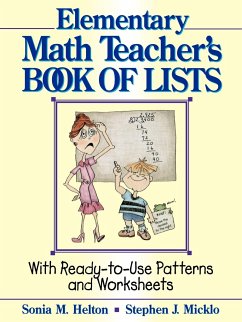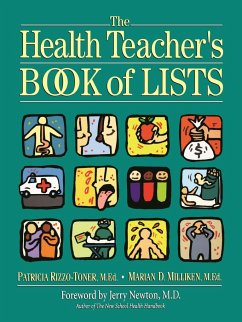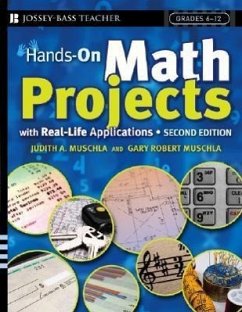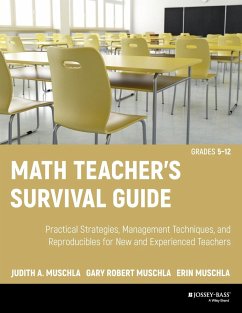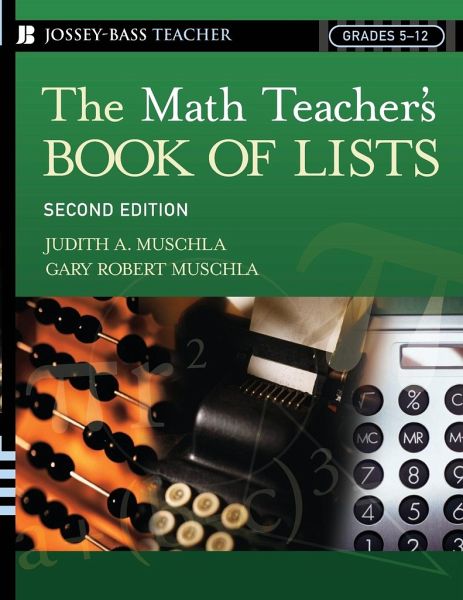
The Math Teacher's Book of Lists
Versandkostenfrei!
Versandfertig in über 4 Wochen
24,99 €
inkl. MwSt.

PAYBACK Punkte
12 °P sammeln!
The Math Teacher's Book of Lists Second Edition, Grades 5-12 This second edition of the bestselling resource for mathematics teachers is a time-saving reference with over 300 useful lists for developing instructional materials and planning lessons for middle school and secondary students. Some of the lists supply teacher background; others are to copy for student use, and many offer new twists on traditional classroom topics. For quick access and easy use, the lists are numbered consecutively, organized into sections focusing on the different areas of math, and printed in a large 8-1/2" x 11" ...
The Math Teacher's Book of Lists Second Edition, Grades 5-12 This second edition of the bestselling resource for mathematics teachers is a time-saving reference with over 300 useful lists for developing instructional materials and planning lessons for middle school and secondary students. Some of the lists supply teacher background; others are to copy for student use, and many offer new twists on traditional classroom topics. For quick access and easy use, the lists are numbered consecutively, organized into sections focusing on the different areas of math, and printed in a large 8-1/2" x 11" lay-flat format for easy photocopying. Here's an overview of the ready-to-use lists you'll find in each section: * I. NUMBERS: THEORY AND OPERATIONS presents 40 lists including classification of real numbers, types of fractions, types of decimals, rules for various operations, big numbers, and mathematical signs and symbols. * II. MEASUREMENT contains over 30 lists including things that measure, measurement abbreviations, the English and metric systems, and U.S. money--coins and bills. * III. GEOMETRY offers more than 50 lists covering topics such as lines and planes, types of polygons, types of quadrilaterals, circles, Pythagorean triples, and formulas for finding area and volume. * IV. ALGEBRA gives you over 40 lists including how to express operations algebraically, powers and roots, common factoring formulas, quadratic functions, and types of matrices. * V. TRIGONOMETRY AND CALCULUS provides more than 30 lists including the quadrant signs of the functions, reduction formulas, integration rules, and natural logarithmic functions. * VI. MATH IN OTHER AREAS offers more than 30 lists that tie math to other content areas, such as descriptive statistics, probability and odds, numbers in popular sports, and some mathematical facts about space. * VII. POTPOURRI features 16 lists that explore the various aspects of math including famous mathematicians through history, world firsts, math and superstition, and the Greek alphabet. * VIII. SPECIAL REFERENCE LISTS FOR STUDENTS provides 10 lists of interest to students such as overcoming math anxiety, steps for solving word problems, and math Web sites for students. * IX. LISTS FOR TEACHERS' REFERENCE contains 25 lists such as how to manage a cooperative math class, sources of problems-of-the-day, how to have a parents' math night, and math Web sites for teachers. * X. REPRODUCIBLE TEACHING AIDS contains an assortment of helpful reproducibles including number lines, fraction strips, algebra tiles, and various nets for making 3-D geometric shapes. The Math Teacher's Book of Lists will save you time and help you instill in your students a genuine appreciation for the world of mathematics. "Through its assortment of informative lists, this book provides a clear and concise approach to mathematics. A practical reference for teachers, it will enable students to master a variety of topics within the parameters of both course and national standards." --Elizabeth Razzano, mathematics teacher, East Brunswick High School, East Brunswick, New Jersey



